Remote work has been the topic of discussion everywhere ever since the onset of the pandemic. While it took over almost all professional operations in 2020 and for the most part of 2021, the world seems to be returning to normal now in 2022 as offices reopen.
However, studies show that remote work is still very much a part of the work culture and will continue to be so for the foreseeable future. Want to know what the state of remote work is exactly like?
Let’s look at the key statistics.
Top Remote Work Statistics
Have a look at the top remote work statistics. They can give you insights across various industries.
- 30% of professionals with less than 5 years of experience want to work from home for a maximum of 1 day a week to be able to get more face time with managers and colleagues. (PWC)
- The top five industries in which remote work was expected to continue were marketing and advertising (75%), information technology (71%), art and design (69%), media and publishing (66%), and accounting and finance (61%). Payscale
- 1 in 3 surveyed professionals said that they would quit their job if they were not allowed to work remotely after the pandemic. (Owl Labs)
- 95% said that working from home was as productive or more productive than when they were working in the office. (Flexjobs)
- 84% say that doing remote work would make them happier. (Owl Labs)
Remote Worker Statistics
The probability of doing remote work differs for individuals. However, we can see some patterns. Some professions do more remote work than others. Parents also have a unique affinity with remote work as opposed to freshers.
- 72% of tech organizations have their employees working outside of the company office. (Velocity Global)
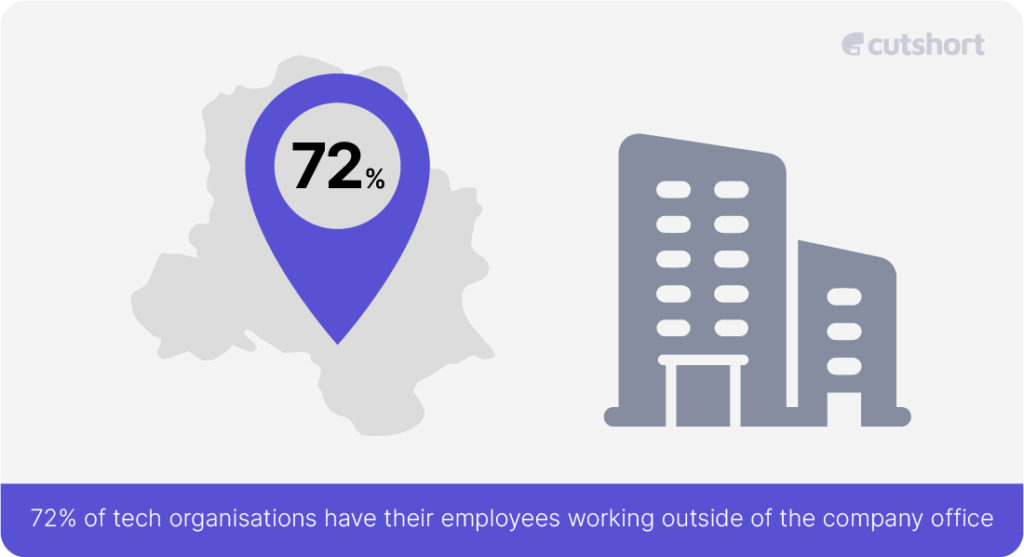
- Parents or caregivers of children aged less than 5 years are most likely to want remote work a minimum of once per week. (McKinsey and Company)
- 48% remote working parents/caregivers said that they pursue remote work because of their parental or caregiver status. (Buffer)
- 58% of all remote work professionals are women. (GitLab)
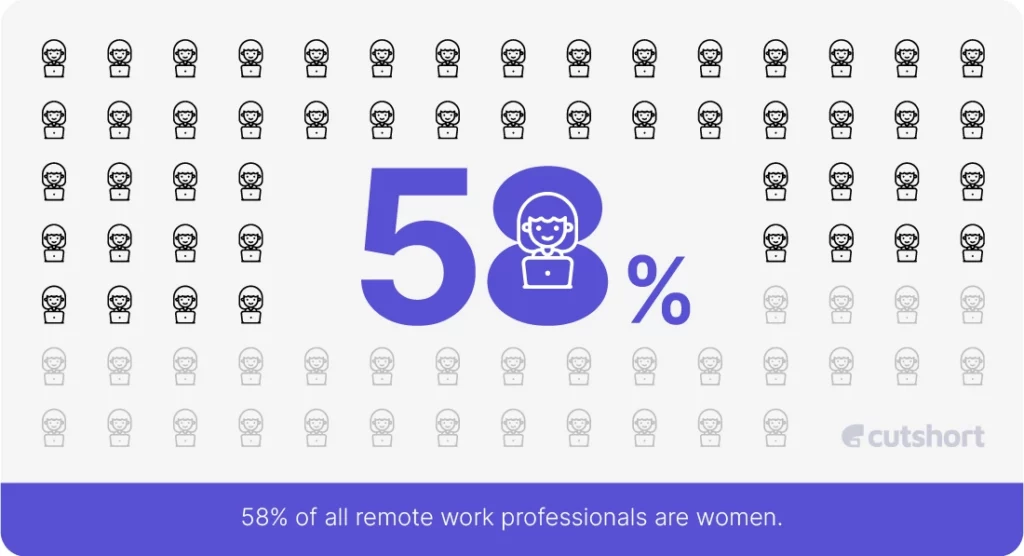
- 65% of the US-based tech companies said that they plan to increase their global remote working workforce. (Verity Global)
- 31% of Americans want to do remote work at least five days a week. (Mckinsey and Company)
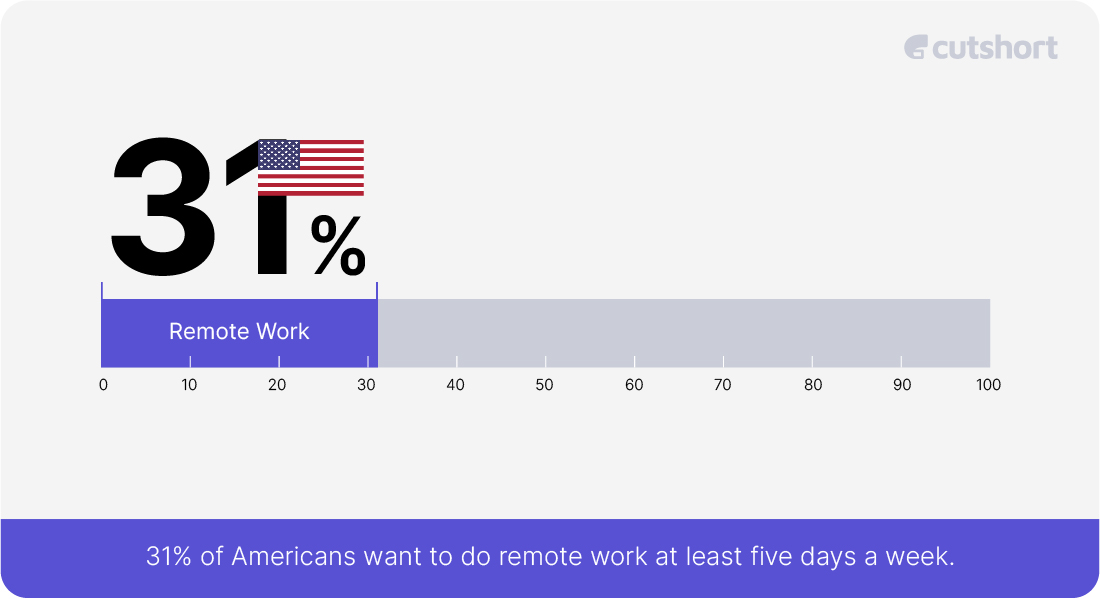
- Organizations in the US and UK are more likely to let their employees work 100% of the time as compared to countries like South Korea, South Africa, Brazil, and South Korea. (GitLab)
Pre vs Post Pandemic Remote Work Statistics
The remote work trend became popular because of the pandemic. However, it is still relevant. Look at a few contrasting statistics pre and post pandemic.
- About 3/4th of professionals who were first-time users of digital channels during the covid-19 pandemic say they will continue to do so when the situation is “normal” again. (McKinsey Consumer Pulse)
- Roughly 20-25% of the professionals could do remote work for about 3-5 days a week if we consider remote work that can be done without any productivity loss. This is 4-5 times more than pre-pandemic levels. (Mckinsey and Company).
- 50% of the companies said that they will have a hybrid or flexible working system after the coronavirus pandemic. (Payscale)

- After the pandemic, 44% of US working professionals did remote work for 5 days or more per week as opposed to 17% who used to do it before the pandemic. (Statista)
- 89% of the global workforce expected their jobs to be partially remote after the covid-19 pandemic ended. (Boston Consulting Group)
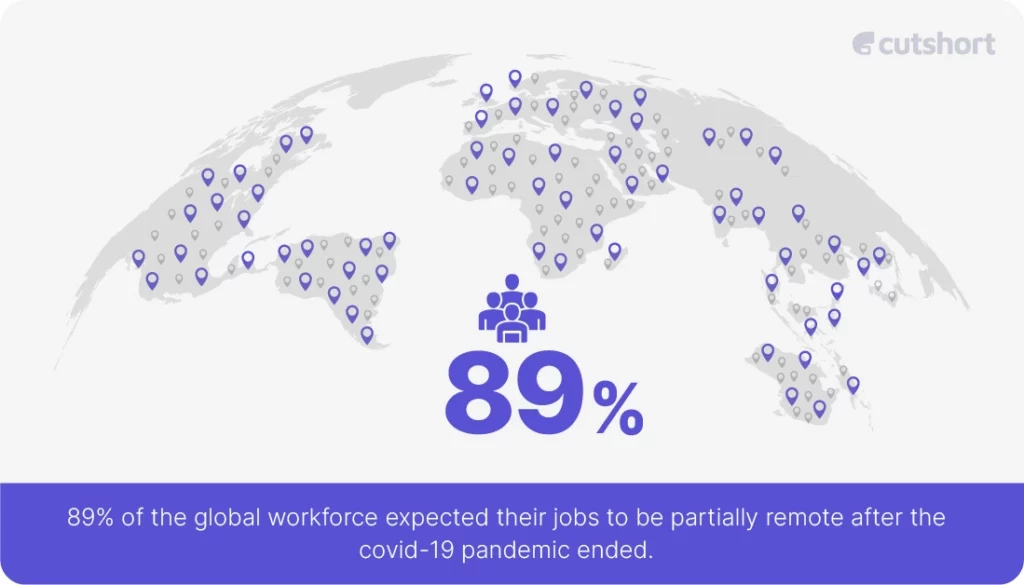
- 22% of Americans are expected to be working remotely by the year 2025, this is an increase of about 87% from pre-pandemic levels. (Upwork)
- Millennials comprised 50% of the workforce that relocated to another country while working remotely. (Owl Labs)
- 70% of work from home employees adopted pets during the covid-19 pandemic with 42% adopting a dog and 28% adopting a cat. (Owl Labs)
Remote Work Employer Branding Statistics
The priorities are changing for employees when it comes to the nature of the work. Employers must look at these key statistics to be able to keep up with the competitive landscape.
- 73% of the employers think that increasing expectations for remote work among professionals following the covid-19 pandemic can change the employee-retention and talent attraction competitive landscape. (Payscale)
- 59% of people stated that they’d more likely choose a company that offers work from home over a company that does not. (Owl Labs)
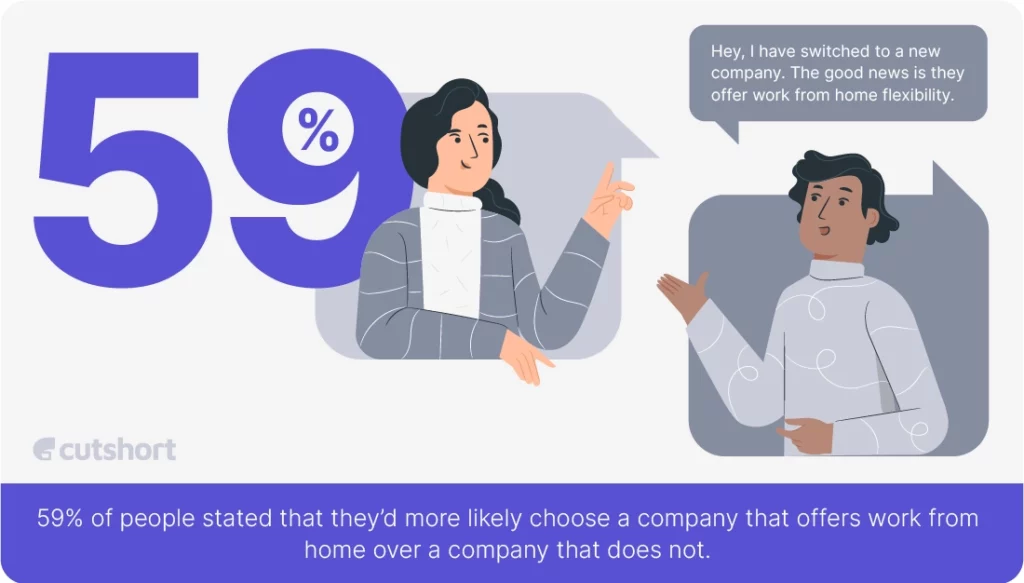
- 76% of skilled workers want flexibility in where they work. (Future Forum)

- 23% of the professionals claimed that they would take a pay cut of 10% to be able to work from home on a permanent basis. (Owl Labs)
- 72% of professionals prefer a hybrid office model. (Slack)
- Only 12% of workers prefer working in the office always. (Slack)
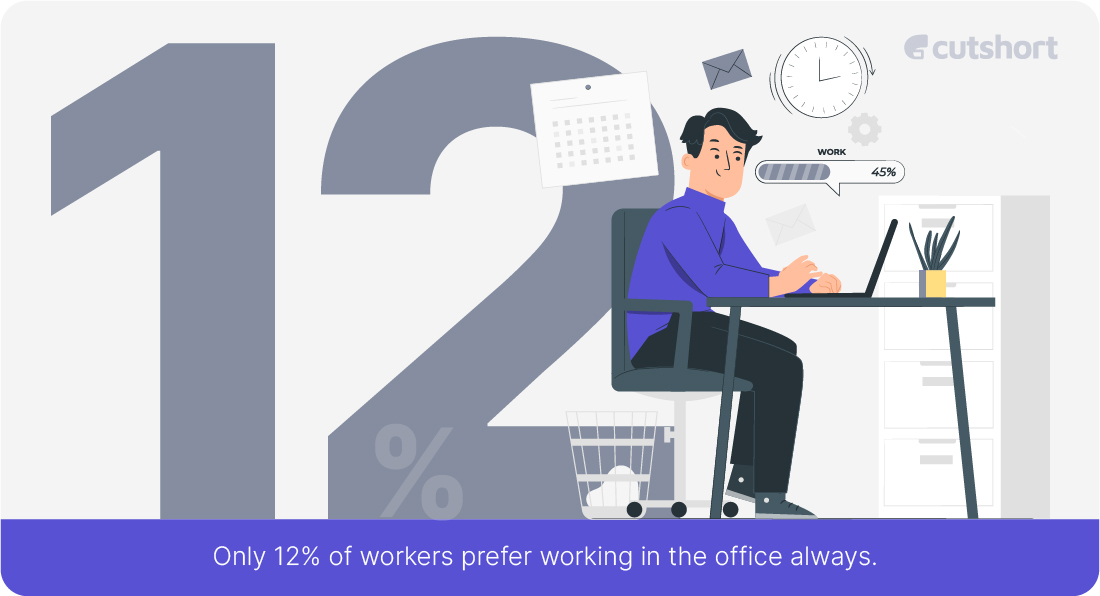
- 72% of professionals would like to keep working remotely for a minimum of 2 days a week even when they can go back to work full-time. (PWC)
- 97% of employees said that they would recommend remote work to others. (Buffer)

- 97.6% of work from home employees say that they would like to work from home at least for some time for the rest of their careers. (Buffer)
- 61% of professionals reviewed remote work more positively. (Flexjobs)
- Roughly 1 in 5 professionals who work outside of their home countries said that local connections are the most significant challenge the employers can address. (GitLab)
- 42% of work from home professionals spend about $100 to $500 creating a home office. (Flexjobs)

- 58% of people said they don’t need to hear from their boss daily. (Flexjobs)
Remote Work Productivity Statistics
There has been a lot of speculation about employee productivity during remote work. These statistics will help you gain data-centric insights about it.
- A survey conducted by Flexjobs showed that 2100 people worked remotely after the pandemic. 51% said that the new working arrangement is more productive. (Flexjobs)
- 55% of the professionals surveyed by Owl Labs said that they worked more hours when working remotely than they did at the office. (Owl Labs)
- Roughly 75% of remote working employees claimed that they could maintain their productivity in individual tasks during the first few months of the remote-work induced by the pandemic. (Boston Consulting Group)
- 51% of remote work employees claimed that they had no trouble in maintaining or even improving their productivity on collaborative and team tasks. (Boston Consulting Group)
- Remote work/work from home increased productivity by 13% in a study conducted on 16,000 professionals. (Stanford University)
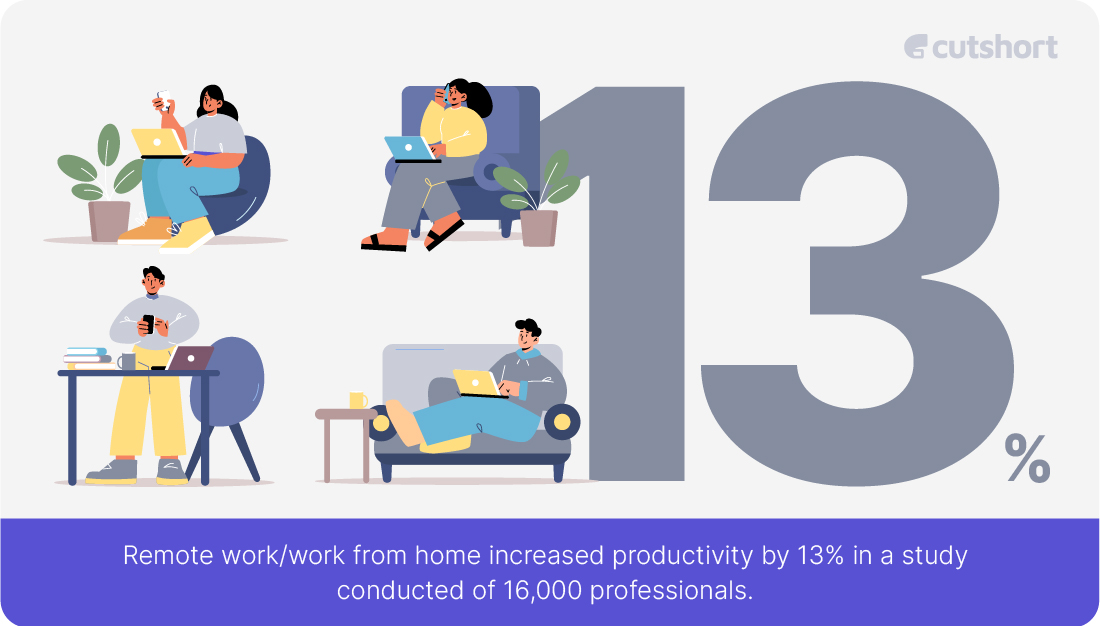
- Study shows that remote work employees work 1.4 days more than in-office professionals. (Airtasker)
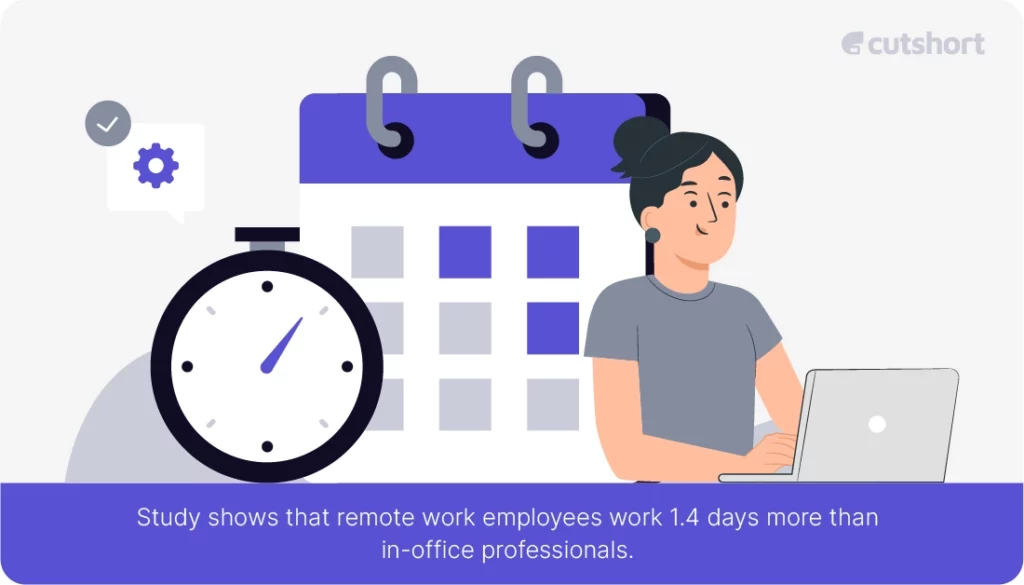
- 83% of employers who had remote employees said that the shift to remote work had been successful for their businesses. (PWC)
- 81% of employees say that they are satisfied with their productivity while doing remote work. (GitLab)
- 53% of the employers claimed that the productivity of their employees improved since they went remote. (PWC)
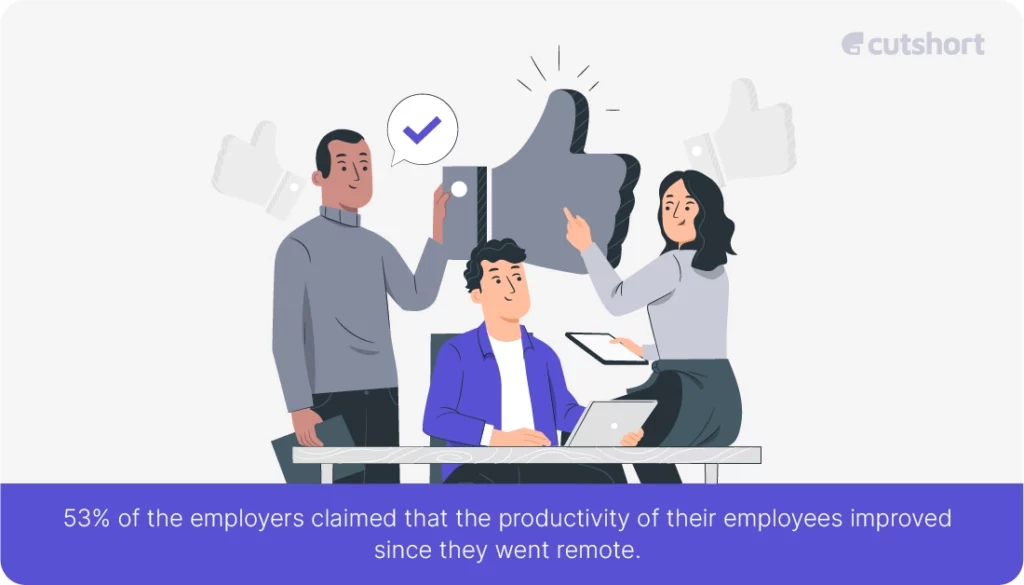
- 51% of people took an online professional development course while working from home during the pandemic. (Flexjobs)
Remote Work Reasons Statistics
Why has remote work not slowed down? The reasons differ across professions and industries. These statistics will help you understand the motivations of remote working professionals better.
- 32% of work from home employees said their ability to have flexible work hours was the top remote work benefit. (Buffer)
- 25% of professionals said that flexibility to work from any location was the top remote work benefit, coming second after the ability to have a flexible schedule. (Buffer)
- Work from home professionals saved an average of 40 minutes every day. (Owl Labs)

- Employees said that the top reasons why their productivity increased were fewer interruptions (68%), quieter work atmosphere (68%), more focused time (63%), more comfortable workspace (66%), and avoidance of office politics (55%). (Flexjobs)
- 15% of remote employees claimed that their boss distracted them from the job, while 22% of office-based professionals said the same thing. (Flexjobs)
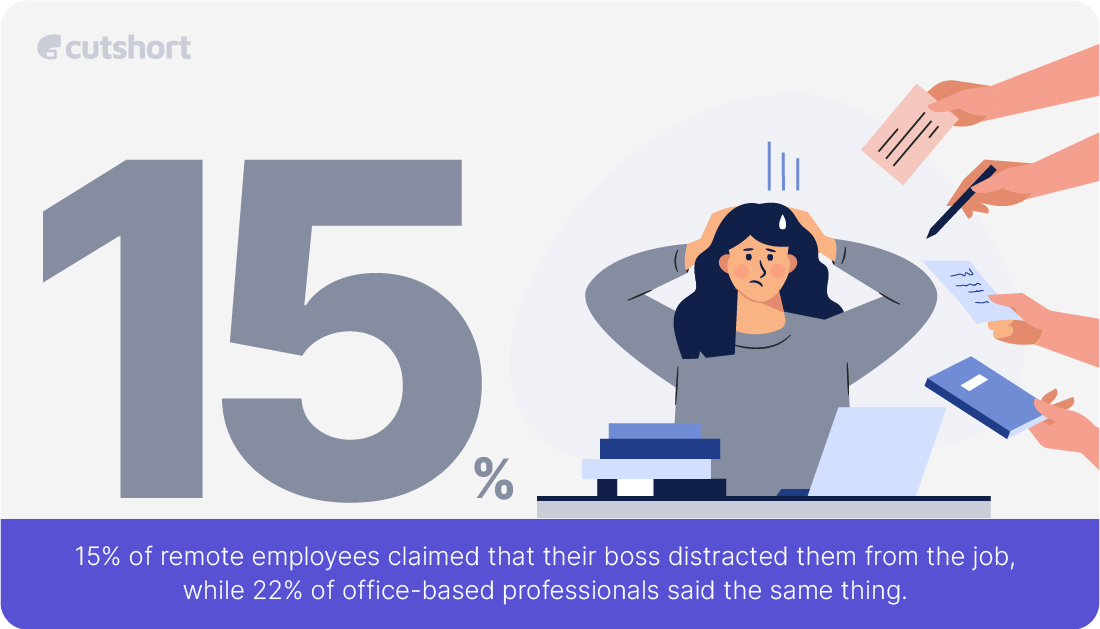
- 85% of employees said a flexible or fully working from home model gave them more time to focus on personal or familial obligations. (Gallup)
- 32% of work from home professionals claimed that remote work gave them more control of their time. (Velocity Global)
- 22% of work from home employees said that an absence of commute is the biggest benefit of remote work. (Buffer)
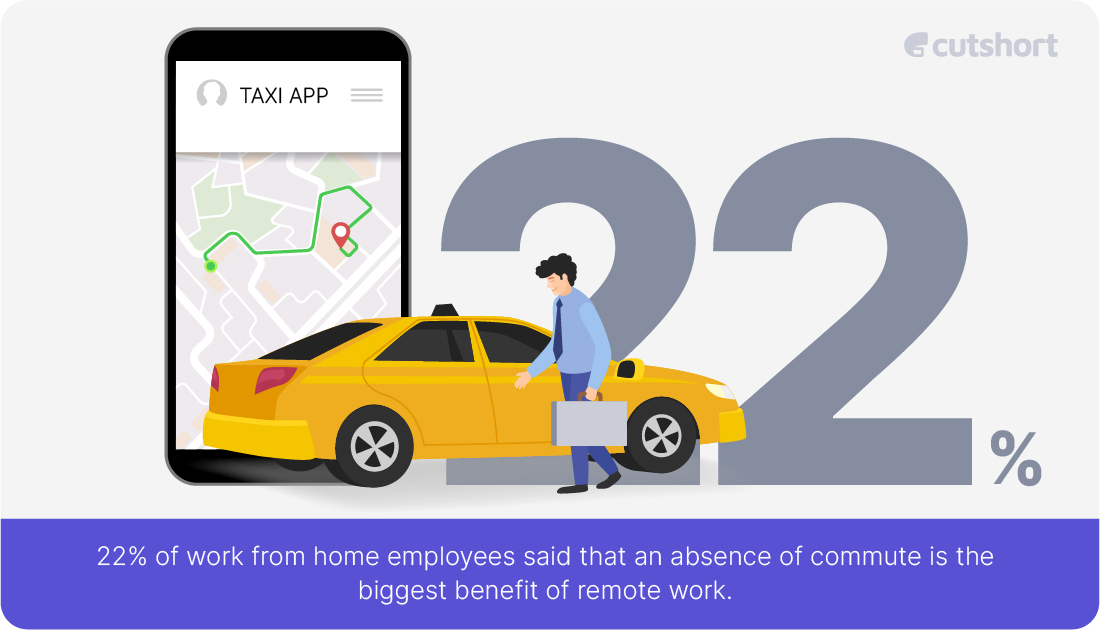
- The commute of employees accounts for over 98% of the carbon footprint. (Sun Microsystems)
Remote Work Statistics: India
India is one of the fastest growing economies in the world. Like all other countries, remote work flourished in India during the pandemic and well after it as well.
- More than 95% of Indian companies said that they would continue implementing the work from home model. (The Economic Times)
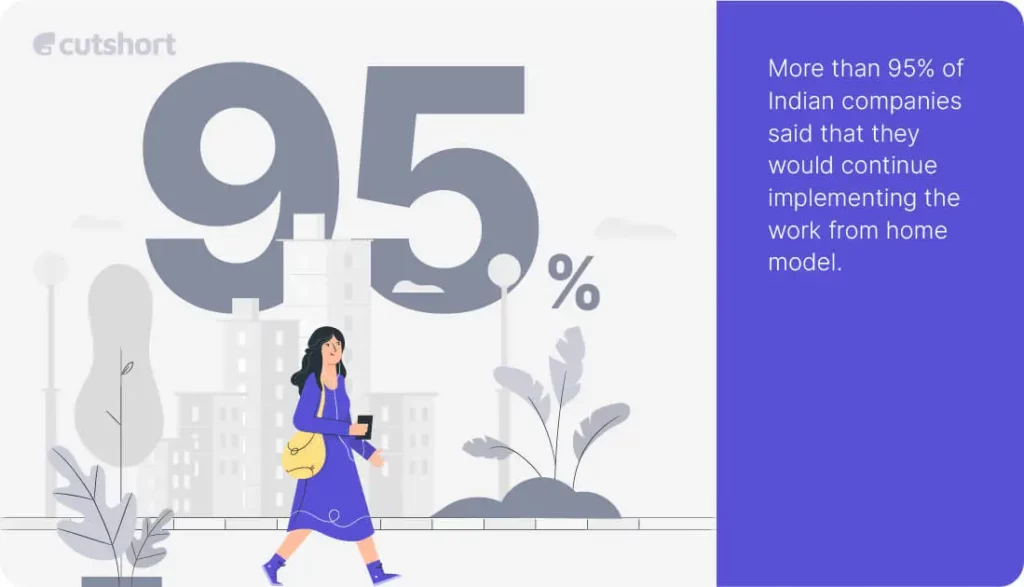
- An Indian study shows a 47% increase in productivity when employees follow the work from home model. (India Today)
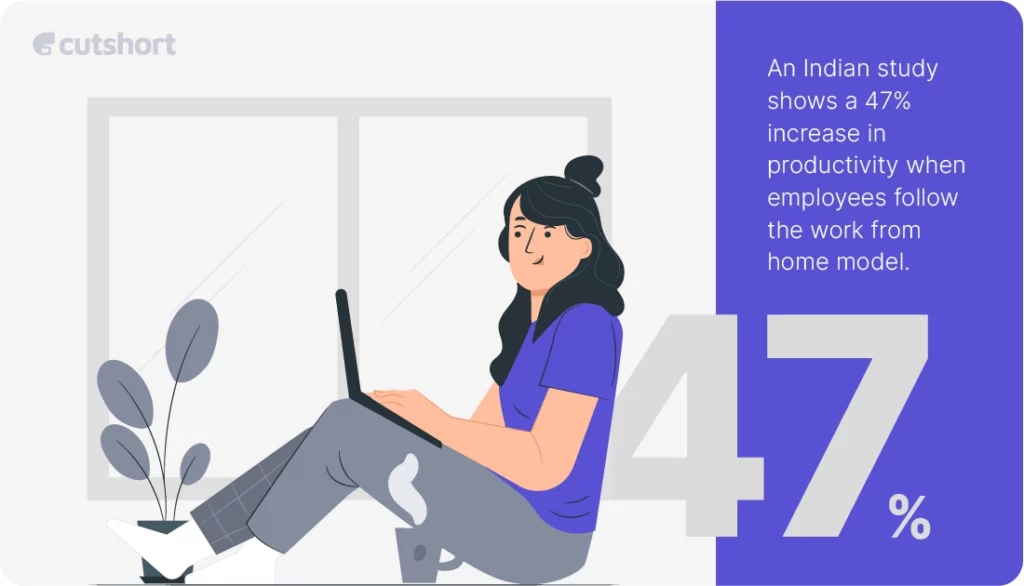
- 82% of the surveyed employees said that they prefer working from home according to a TOI study. (Times of India)
- 63% of women said that they are willing to shift their jobs if the remote work option becomes available. (Economic Times)
- 44% respondents of a study said that remote work has improved their mental health. (Centre for Policy Research)
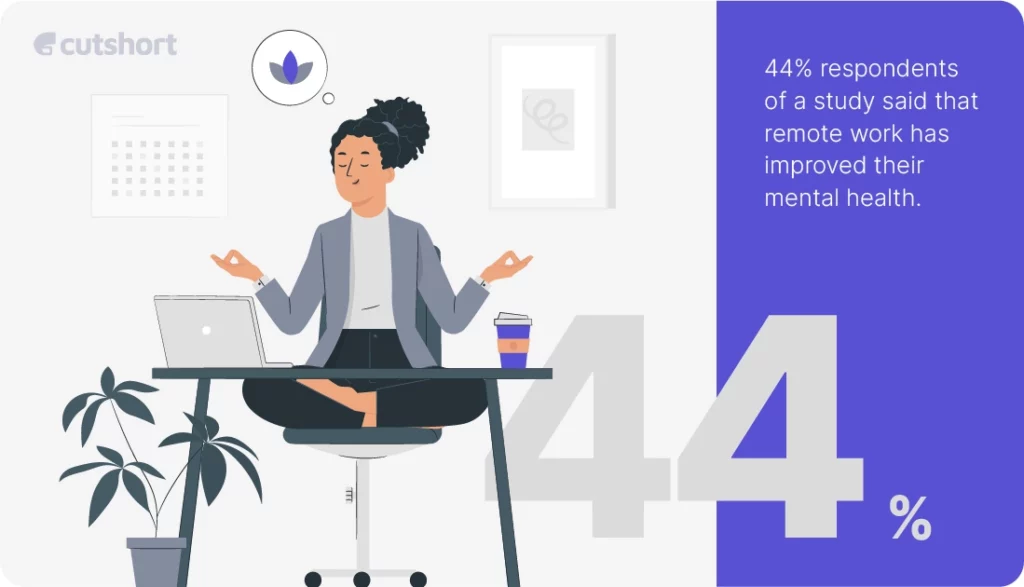
Remote Work Challenges
While remote work has a slew of benefits and is highly popular among the employees. It also has its challenges.
- 44% of the surveyed companies said that they don’t allow any kind of remote work. (Owl Labs)
- 44% of work from home professionals are afraid that they will suffer a connection loss from their communities and colleagues because of working remotely. (McKinsey and Company)
- 16% of workers said that collaborating with colleagues is difficult while working from home. (Buffer)
- 56% of working professionals said that they experienced burnout while working remotely during the pandemic. (Flexjobs)
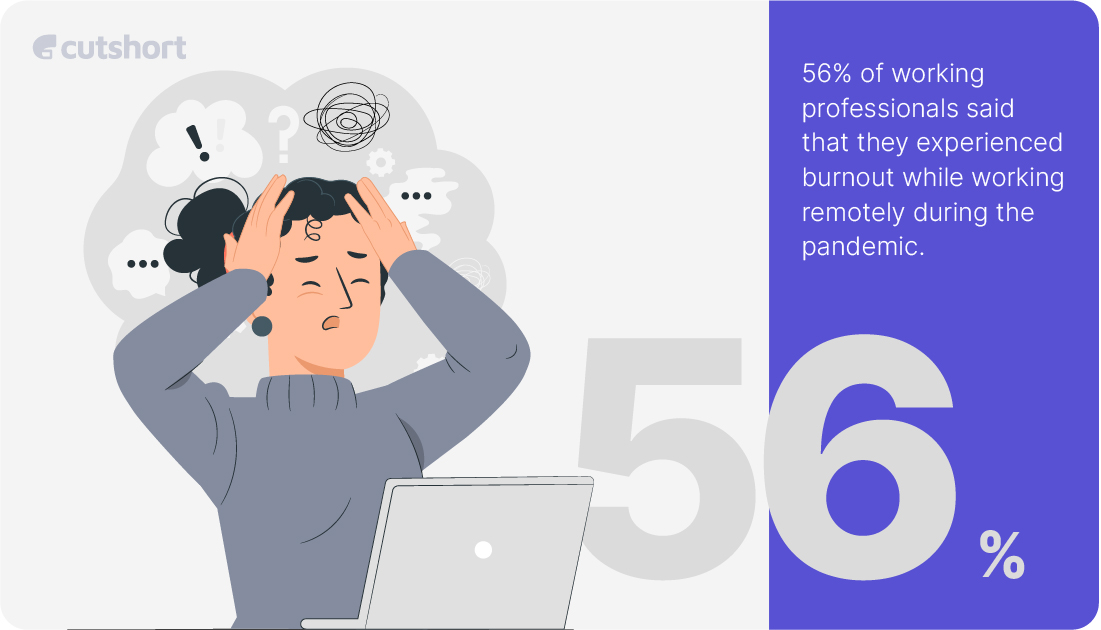
- 30% of working employees said that new hire training and onboarding is worse than how it was before the pandemic. (PWC)
- 42% of the employees said that they have trouble setting boundaries while working from home. (GitLab)
- 29% of corporate executives said that employees need to be at the office at least three days a week to maintain a strong company culture. (PWC)

- 70% of employees working from home said that they find it hard to participate in the conversation during a video call meeting. (Owl Labs)





